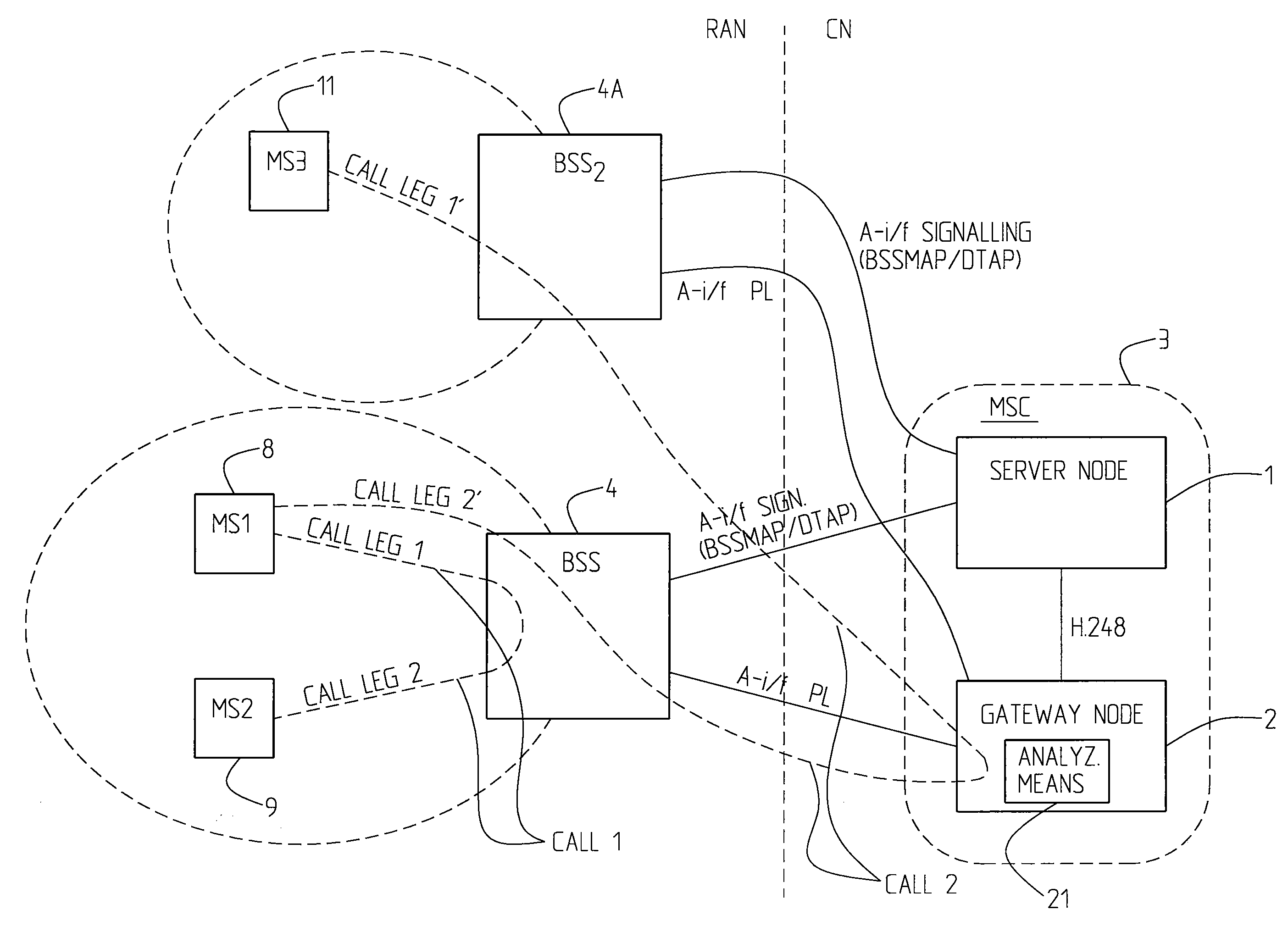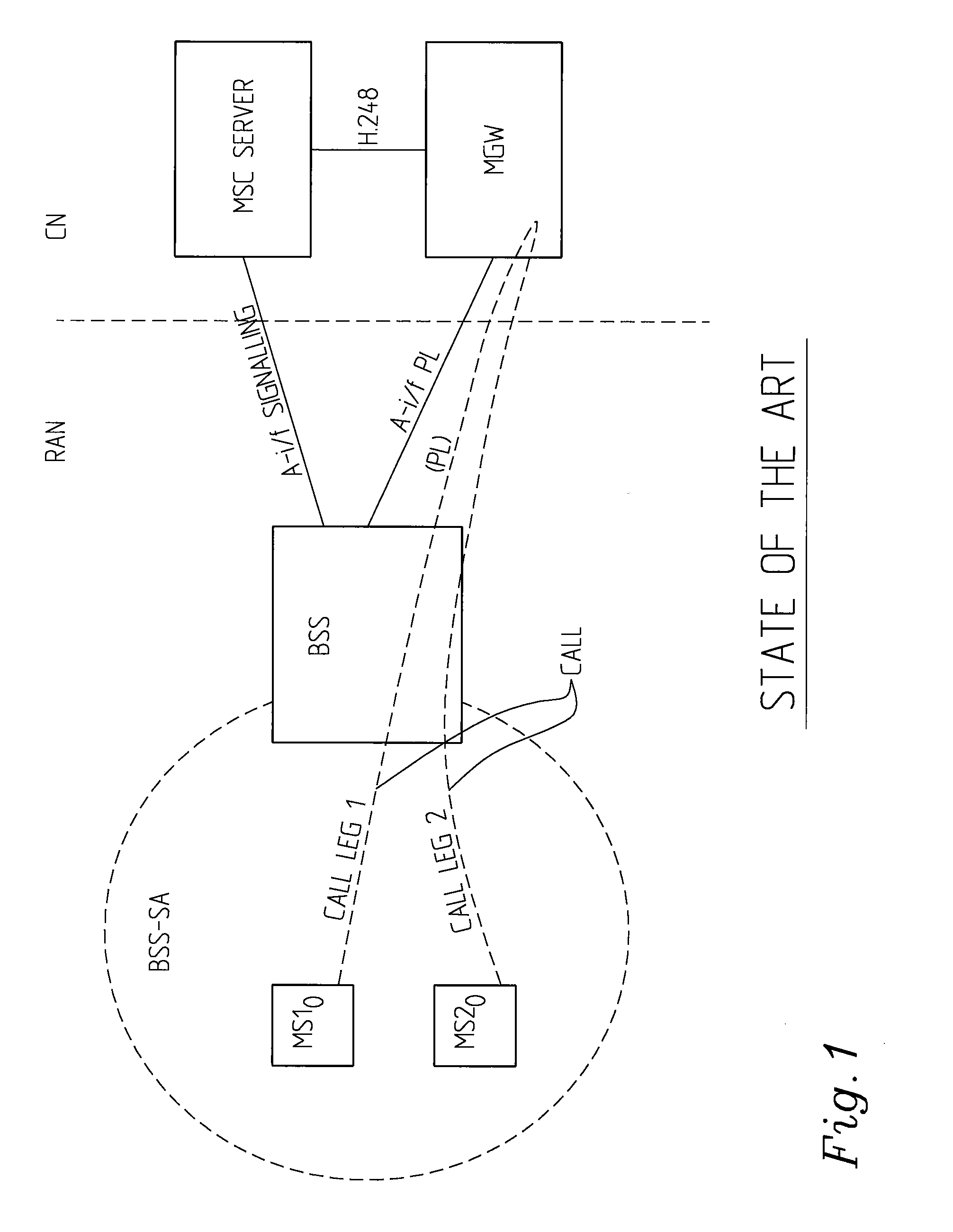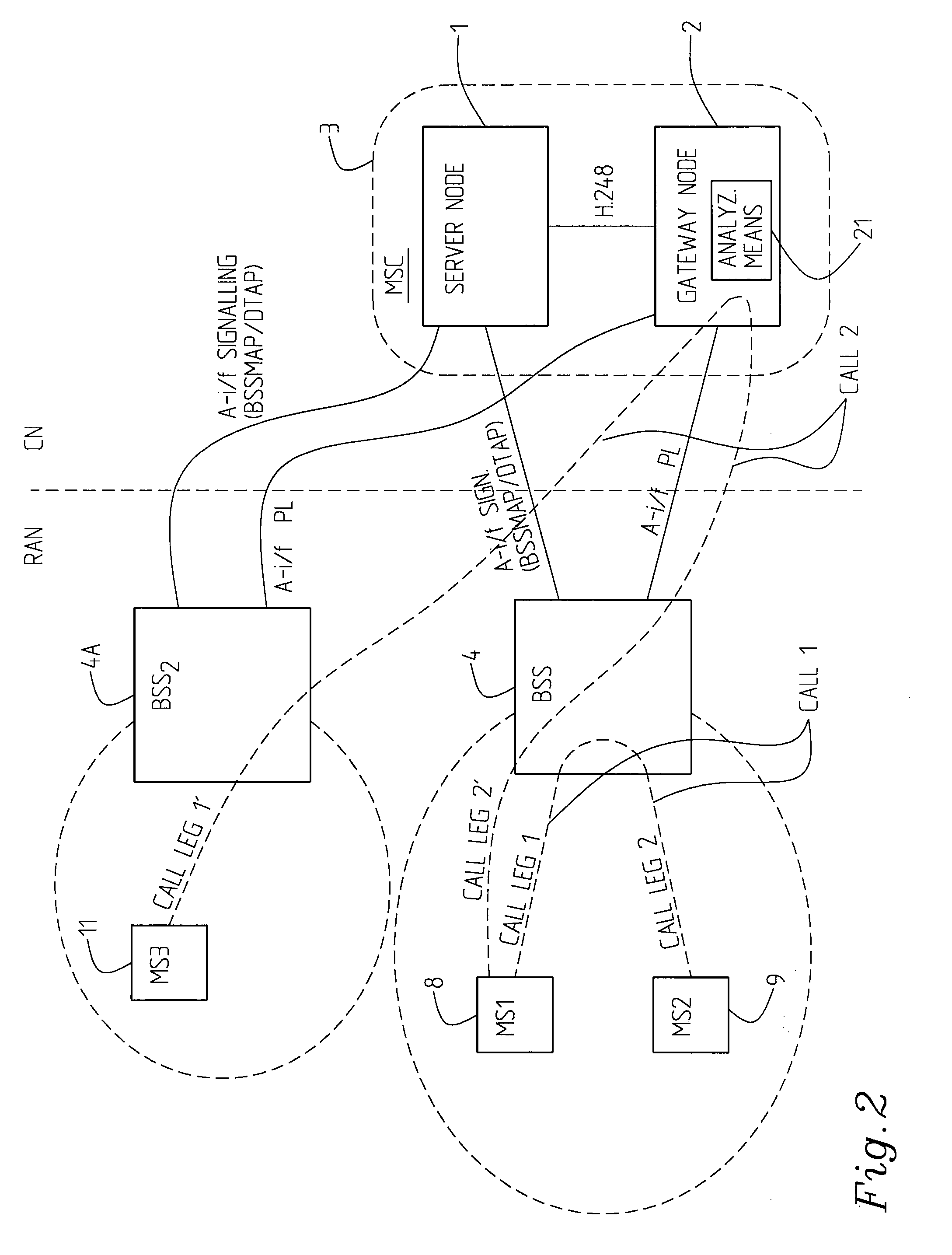Call Handling In A Mobile Communications Network
a mobile communication network and call technology, applied in the field of call handling in a mobile communication system, can solve the problems of speech call quality degradation, high transmission cost, waste of resources, etc., and achieve the effect of optimizing the transmission of user payload, flexible and simple, and avoiding unnecessary waste of resources
- Summary
- Abstract
- Description
- Claims
- Application Information
AI Technical Summary
Benefits of technology
Problems solved by technology
Method used
Image
Examples
Embodiment Construction
[0031]FIG. 1 shows, as is known from a GSM system, a BSS of a RAN connected to a so called split architecture MSC comprising an MSC server and a media gateway MGW or more generally a gateway node. Here the MGW comprises a pool of interface devices which, when they are allocated, are connected to the A-interface of the respective BSC. The MGW communicates with the MSC server over the H.248 protocol and it is responsible for handling payload (PL) traffic whereas the MSC server handles the A-interface control signalling over BSSMAP / DTAP (BSS Management Application Part / Direct Transfer Application Part (GSM Layer 3 protocol)). BSS here comprises BSCs controlling BTSs as discussed above (not shown). In the figure it is supposed that BSS is responsible for a BSS service area (BSS-SA). For illustrative purposes are shown a first mobile station MS10 and a second mobile station MS20. If MS10 wants to make a call to MS20, here both actually handled by the same BSS, i.e. using radio resources ...
PUM
 Login to View More
Login to View More Abstract
Description
Claims
Application Information
 Login to View More
Login to View More - R&D
- Intellectual Property
- Life Sciences
- Materials
- Tech Scout
- Unparalleled Data Quality
- Higher Quality Content
- 60% Fewer Hallucinations
Browse by: Latest US Patents, China's latest patents, Technical Efficacy Thesaurus, Application Domain, Technology Topic, Popular Technical Reports.
© 2025 PatSnap. All rights reserved.Legal|Privacy policy|Modern Slavery Act Transparency Statement|Sitemap|About US| Contact US: help@patsnap.com



